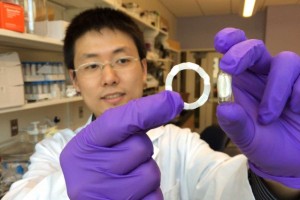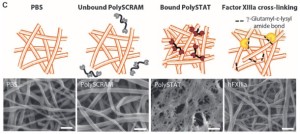 Topic Close-up #15
Topic Close-up #15
Symposium B02—Carbon Nanostructures in Medicine and Biology
Extended deadline for submitting abstracts:
December 16, 2022
Submit today!
 Topic Close-up #15
Topic Close-up #15Symposium B02—Carbon Nanostructures in Medicine and Biology
Submit today!

Image: APPER/Wikimedia Commons
Carbon nanotubes have a potentially wide variety of applications due to their strength, flexibility, and other promising properties. While many researchers have been focused on applying carbon nanotubes in nanotechnology and electronics, ECS members Kris Dahl and Mohammad Islam are looking to give the nanotubes a new use in medical applications.
Dahl, a chemical and biomedical engineer; and Islam, a materials scientists; are taking their respective skills and putting them to use in the novel interdisciplinary development, making possible carbon nanotubed-based structures for drug delivery.
This from Carnegie Mellon University:
Picture feeding a dog a pill. In order to do so, one would wrap it in cheese to mask the medicine and make it more appealing. In a similar vein, to enhance drug delivery, Dahl and Islam have engineered proteins that wrap around the drug-coated carbon nanotubes. The cells, which love these proteins, more readily take up the drug—much as a dog would more readily eat the cheese-coated pill.

This new extended-release device has less risk of breaking or causing intestinal blockage than previous prototypes.
Image: MIT
Researchers and engineers in all corners of science have been looking at the ways their specific technical interest area can affect medicine and health care. Whether it be implantable microchip-based devices that could outpace injections and conventional pills or jet-propelled micromotors that can swim through the body to take tissue samples and make small surgical repairs, researchers have been seeing the interdisciplinary nature of science and how it could impact quality of life.
A team of researchers from MIT’s Koch Institute for Integrative Cancer Research have teamed up with Massachusetts General Hospital to develop the latest scientific advancement in health care in the form of a polymer gel that will allow for ultra-long drug delivery.
The prototype that the team has built is essentially a ring-shaped device that can be folded into a capsule. Once the patient has ingested the capsule, the device can expand back to its original form and deliver drugs over a number of days, weeks, or potentially months.

Blood clots treated with PolySTAT (second from right) had denser fibrin networks, which helps reinforce and strengthen the clots.
Image: University of Washington
University of Washington researchers have developed a new injectable polymer that could keep soldiers and trauma patients from bleeding to death, called the PolySTAT.
The new polymer works to strengthen blood clots once administered into the patient’s bloodstream in a simple shot. The polymer then finds unseen internal injuries and starts working to stop the bleeding.
Researchers believe this could become the first line of defense for anything from battlefield injuries to car accidents. With testing already underway, the polymer has the potential to reach humans in as few as five years.
Researchers from the University of Sydney have recently published their findings that quantum dots made of graphene can improve bio-imaging and LEDs.
The study was published in the journal Nanoscale, where the scientists detailed how activating graphene quantum dots produced a dot that would shine nearly five times bright than the conventional equivalent.
Essentially, the dots are nano-sized semiconductors, which are fluorescent due to their surface properties. However, this study introduces the utilization of graphene in the quantum dot, which produces an extra-bright dot that has the potential to help medicine.